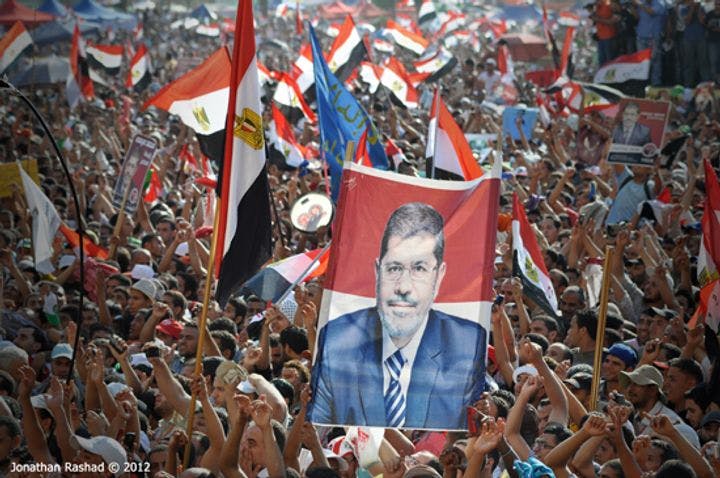Fall 2011
The Islamist Bogeyman
– The Wilson Quarterly
By portraying Islamists as a greater threat to society than the status quo, authoritarian regimes dampened the ambitions of democratically oriented opposition groups.
Argentina, Portugal, the Soviet Union: All turned democratic during what the political scientist Samuel Huntington famously called the “Third Wave” of democratization, a phenomenon of the 1970s, ’80s, and early ’90s. The authoritarian regimes of the Middle East and North Africa, however, were curiously resistant, and scholars have long tried to figure out why.
One group blames the region’s oil riches, noting the negative correlation between resource wealth and democracy. Another says that the absence of civic life and the strength of tribal and family-based networks make the region more disposed toward authoritarianism. For still others, the culprit is Islam, with its mixing of religion and governance.
Ellen Lust, a political scientist at Yale, is not completely persuaded by any of these explanations. An important factor is being overlooked, she insists: the ability of incumbent regimes to exploit the presence of Islamist movements. By portraying Islamists as a greater threat to society than the status quo, authoritarian regimes dampened the ambitions of democratically oriented opposition groups across the region, particularly in the 1980s.
Take Tunisia. The secularist regime of President Zine el Abidine Ben Ali, who took power in a bloodless coup in 1987, excluded Islamists from the political sphere. The fear of Islamism was high, particularly because of the 1979 Islamic revolution in Iran. This anxiety was compounded in the early 1990s by a civil war in Algeria that was sparked when the state canceled parliamentary elections to head off a likely Islamist victory. Rather than risk having Islamists come to power during a push for reform in its own country, the Tunisian opposition swallowed its ambitions and accepted the state’s repressive policies.
Ironically, countries where Islamist voices were incorporated into government experienced more liberalization than other states in the region. A prime example is Jordan, where King Hussein allowed the Muslim Brotherhood to be a part of the political fold for most of his reign from 1935 to 1999. “Secularists in such regimes were more likely to believe that they had little to lose if Islamists came to power,” Lust explains, “and thus, they were more likely to demand reform.”
The Arab Spring erupted in part, she believes, because dissatisfaction with the status quo grew so great that it trumped the long-standing fear of Islamist power. But it was also aided by the gradual accommodation of Islamist movements since the 1980s. (The Muslim Brotherhood cooperated with pro-democracy groups to overthrow Egyptian president Hosni Mubarak, for instance.) Whether Islamist and pro-democracy secularist groups can continue to find common ground will be a big factor in determining if the Third Wave can finally make it ashore in North Africa and the Middle East.
THE SOURCE: “Missing the Third Wave: Islam, Institutions, and Democracy in the Middle East” by Ellen Lust, in Studies in Comparative International Development , June 2011.
Photo courtesy of Flickr/Jonathan Rashad
